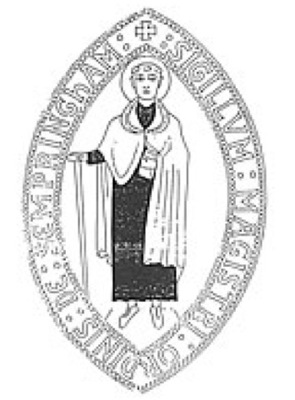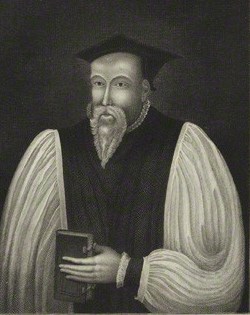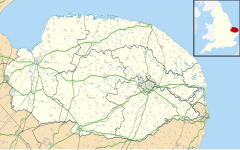
The Gilbertine Order of Canons Regular was founded around 1130 by Saint Gilbert in Sempringham, Lincolnshire, where Gilbert was the parish priest. It was the only completely English religious order and came to an end in the 16th century at the time of the Dissolution of the Monasteries. Modest Gilbertine revivals have taken place in the late 20th and early 21st centuries on three continents.

Merton Priory was an English Augustinian priory founded in 1114 by Gilbert Norman, Sheriff of Surrey under King Henry I (1100–1135). It was situated within the manor of Merton in the county of Surrey, in what is today the Colliers Wood area in the London Borough of Merton.

Burscough Priory, at Burscough, Lancashire, England, was an Augustinian foundation, established in around 1190 and dissolved in around 1536. Some remains of the church survive.

Thetford Priory is a Cluniac monastic house in Thetford, Norfolk, England. Founded in 1103 by Roger Bigod of Norfolk, Thetford was one of the most important monasteries of East Anglia.

Robert Holgate was Bishop of Llandaff from 1537 and then Archbishop of York. He recognised Henry VIII as head of the Church of England.

Mattersey Priory is a former monastery of the Gilbertine Order, located near the village of Mattersey, Nottinghamshire, England. It is managed by English Heritage.
Rohese de Vere, Countess of Essex was a noblewoman in England in the Anglo-Norman and Angevin periods. Married twice, she and her second husband founded the Gilbertine monastery of Chicksands in Bedfordshire.
Wintney Priory was a priory of Cistercian nuns in Hartley Wintney, Hampshire, England.
Ickleton Priory was a Benedictine priory of nuns at Ickleton, Cambridgeshire, England. It was established in the middle of the 12th century and suppressed in the Dissolution of the Monasteries in 1536.
Marmont Priory was a priory for Gilbertine Canons in Cambridgeshire, England. It was established by landowner Ralph de Hauvill as a small priory or chantry of three canons who prayed for the souls of de Hauvill and his wife, Maud. Fifteen years earlier, Maud had a vision of Gilbert of Sempringham ascending to Heaven on the day of his death.
Stonely Priory was an Augustinian priory in Cambridgeshire, England. It was dissolved in 1536.

Bicknacre Priory, formerly also Woodham Priory or Woodham Ferrers Priory, was a community of Austin Canons in Bicknacre, Woodham Ferrers, Essex, England.

Walden Abbey was a Benedictine monastery in Saffron Walden, Essex, England, founded by Geoffrey de Mandeville, 1st Earl of Essex, between 1136 and 1143. Originally a priory, it was elevated to the status of an abbey in 1190.
Alvingham Priory was a Gilbertine priory in St. Mary, Alvingham, Lincolnshire, England. The Priory, established between 1148 and 1154, was a "double house", where religious of both sexes lived in two separate monasteries. They did not commonly communicate with one another, and there was an internal wall dividing their priory church. The superior of every Gilbertine house was the prioress, the prior being really an official of her house.

Bullington Priory was a priory in Bullington, Lincolnshire, England.

North Ormsby Priory was a Gilbertine priory in North Ormsby, Lincolnshire, England.

Sempringham Priory was a priory in Lincolnshire, England, located in the medieval hamlet of Sempringham, to the northwest of Pointon. Today, all that remains of the priory is a marking on the ground where the walls stood and a square, which are identifiable only in aerial photos of the vicinity. However, the parish church of St Andrew's, built around 1100 AD, is witness to the priory standing alone in a field away from the main road.
Priory of St. Thomas near Stafford was an Augustinian religious house near Stafford, Staffordshire, England. Founded sometime in approximately 1174, it was a surrendered to the Crown in 1538, during the Dissolution of the Monasteries.
Campsey Priory,, was a religious house of Augustinian canonesses at Campsea Ashe, Suffolk, about 1.5 miles (2.5 km) south east of Wickham Market. It was founded shortly before 1195 on behalf of two of his sisters by Theobald de Valoines, who, with his wife Avice, had previously founded Hickling Priory in Norfolk for male canons in 1185. Both houses were suppressed in 1536.
St Leonard's Priory was a Benedictine nunnery in what is now east London, which gave its name to Bromley St Leonard.












